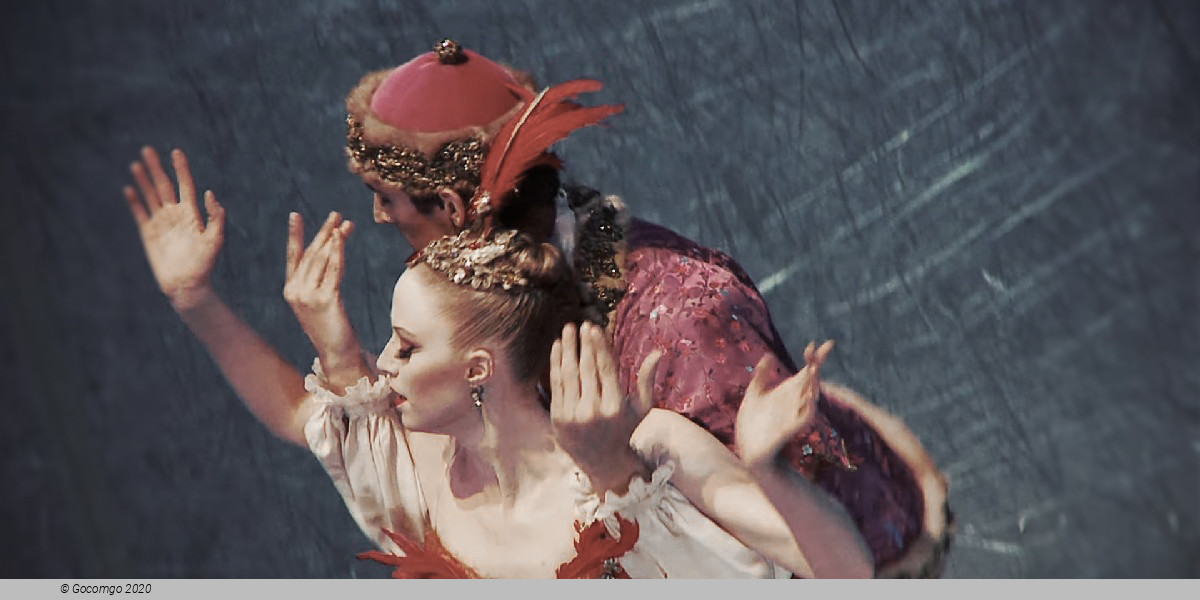The Firebird
The Firebird

The Firebird is a ballet and orchestral concert work by the Russian composer Igor Stravinsky. It was written for the 1910 Paris season of Sergei Diaghilev's Ballets Russes company; the original choreography was by Michel Fokine, with a scenario by Alexandre Benois and Fokine based on the Russian fairy tales of the Firebird and the blessing and curse it possesses for its owner.
When first performed at the Opéra de Paris on 25 June 1910, the work was an instant success with both audience and critics.
The ballet has historic significance not only as Stravinsky's breakthrough piece, but also as the beginning of the collaboration between Diaghilev and Stravinsky that would also produce the acclaimed ballets Petrushka (1911) and The Rite of Spring (1913).
Igor Stravinsky was the son of Fyodor Stravinsky, the principal bass at the Imperial Opera, St Petersburg, and Anna, née Kholodovskaya, a competent amateur singer and pianist from an old-established Russian family. Fyodor's association with many of the leading figures in Russian music, including Rimsky-Korsakov, Borodin and Mussorgsky, meant that Igor grew up in an intensely musical home. In 1901, Stravinsky began to study law at St Petersburg University, while taking private lessons in harmony and counterpoint. Having impressed Rimsky-Korsakov with some of his early compositional efforts, Stravinsky worked under the guidance of the older composer. By the time of his mentor's death in 1908, Stravinsky had produced several works, among them a Piano Sonata in F♯ minor (1903–04), a Symphony in E♭ major (1907), which he catalogued as "Opus 1", and in 1908 a short orchestral piece, Feu d'artifice ("Fireworks").
In 1909, Feu d'artifice was performed at a concert in St Petersburg. Among those in the audience was the impresario Sergei Diaghilev, who at that time was planning to introduce Russian music and art to western audiences. Like Stravinsky, Diaghilev had initially studied law, but had gravitated via journalism into the theatrical world. In 1907, he began his theatrical career by presenting five concerts in Paris; in the following year, he introduced Mussorgsky's opera Boris Godunov. In 1909, still in Paris, the Ballets Russes was launched, initially with Borodin's Polovtsian Dances from Prince Igor and Rimsky-Korsakov's Scheherazade. To present these works, Diaghilev recruited the choreographer Michel Fokine, the designer Léon Bakst and the dancer Vaslav Nijinsky. Diaghilev's intention, however, was to produce new works in a distinctively 20th-century style, and he was looking for fresh compositional talent.
Creation
The ballet was the first of Sergei Diaghilev's Ballets Russes productions to have an all-original score composed for it. Alexandre Benois wrote in 1910 that he had two years earlier suggested to Diaghilev the production of a Russian nationalist ballet, an idea all the more attractive given both the newly awakened French passion for Russian dance and also the ruinously expensive costs of staging opera. The inspiration of mixing the mythical Firebird with the unrelated Russian tale of Koschei the Deathless possibly came from a popular child's verse by Yakov Polonsky, "A Winter's Journey" (Zimniy put, 1844), which includes the lines:
And in my dreams I see myself on a wolf's back
Riding along a forest path
To do battle with a sorcerer-tsar (Koschei)
In that land where a princess sits under lock and key,
Pining behind massive walls.
There gardens surround a palace all of glass;
There Firebirds sing by night
And peck at golden fruit.
Benois collaborated with the choreographer Michel Fokine, drawing from several books of Russian fairy tales including the collection of Alexander Afanasyev, to concoct a story involving the Firebird and the evil magician Koschei.
Diaghilev approached the Russian composer Anatoly Lyadov (1855–1914) to write the music. There is no evidence, however, despite the much-repeated story that Lyadov was slow to start composing the work, that he ever accepted the commission to begin with. There is evidence to suggest that Nikolai Tcherepnin had previously started composing music for the ballet—music which became The Enchanted Kingdom—but that Tcherepnin, for reasons unexplained, withdrew from the project after completing only one scene. Diaghilev eventually transferred the commission to the 28-year-old Stravinsky.


